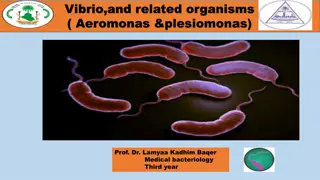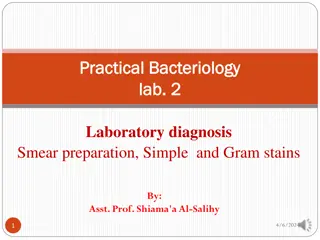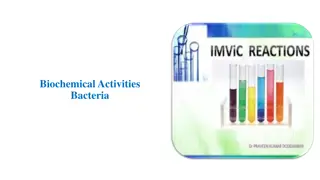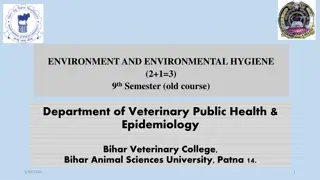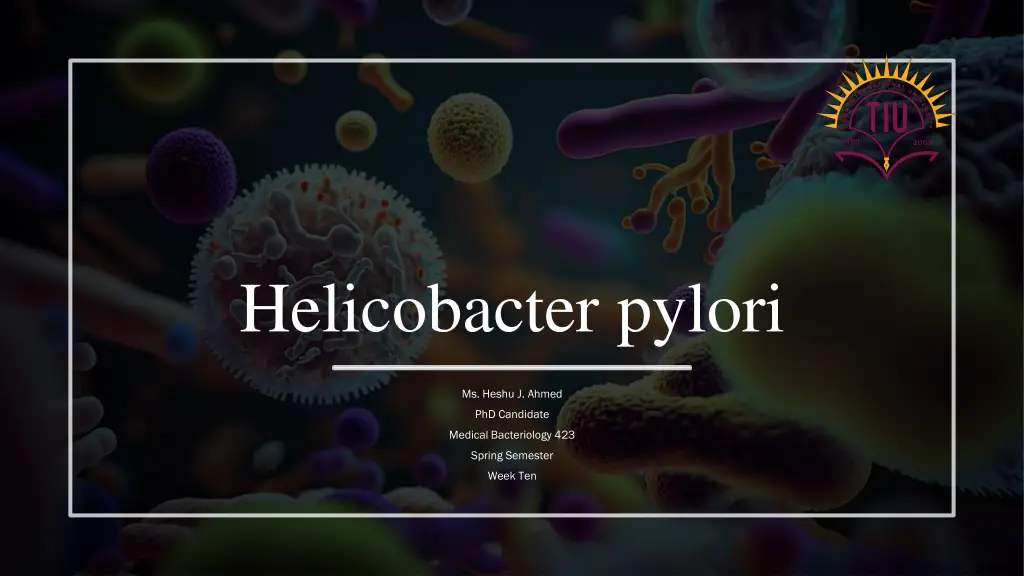
Understanding Helicobacter pylori: Characteristics, Epidemiology, Pathogenesis, and Clinical Manifestations
Explore the unique bacteriologic features of Helicobacter pylori, its epidemiology, pathogenesis, survival mechanisms in the stomach, and clinical manifestations. Understand how H. pylori persists, colonizes the gastric mucosa, and causes gastritis and peptic ulcer disease. Discover treatment options and preventive measures for this bacterial infection.
Download Presentation

Please find below an Image/Link to download the presentation.
The content on the website is provided AS IS for your information and personal use only. It may not be sold, licensed, or shared on other websites without obtaining consent from the author. If you encounter any issues during the download, it is possible that the publisher has removed the file from their server.
You are allowed to download the files provided on this website for personal or commercial use, subject to the condition that they are used lawfully. All files are the property of their respective owners.
The content on the website is provided AS IS for your information and personal use only. It may not be sold, licensed, or shared on other websites without obtaining consent from the author.
E N D
Presentation Transcript
Helicobacter pylori Ms. Heshu J. Ahmed PhD Candidate Medical Bacteriology 423 Spring Semester Week Ten
Outline Introduction to Helicobacter pylori Unique Bacteriologic Features of H. pylori Epidemiology Pathogenesis Clinical Manifestations Treatment
Objectives 1. Understand the characteristics and growth requirements of Helicobacter pylori. 2. Identify unique bacteriologic features of Helicobacter pylori. 3. Learn about the epidemiology of Helicobacter pylori infection. 4. Explore the pathogenesis and survival mechanisms of Helicobacter pylori in the stomach. 5. Recognize the clinical manifestations of Helicobacter pylori infection. 6. Discuss the treatment options and preventive measures for Helicobacter pylori infection.
Helicobacter Pylori characteristics Slender, curved rods with polar flagella. Typical gram-negative structure. Requires a microaerophilic atmosphere for growth. Slow growth (3-5 days). Rapidly motile due to multiple polar flagella. cell wall
Helicobacter Pylori Unique Bacteriologic Features: Urease: Allows persistence in low pH environments by generating ammonia. High production (6% of bacterial protein). Demonstrable action within minutes in the presence of urea.
Epidemiology Infection is transmitted by human fecal or gastric secretions Gastric colonization is prevalent worldwide Colonization persists indefinitely Ethnic links are strong H pylori is the sole nondrug cause of gastritis and ulcers Adenocarcinoma and lymphoma are preceded by infection
Pathogenesis Survival Mechanisms in the Stomach: Adherence to Gastric Mucosa: Multiple mechanisms used for adherence. Motility via flagella to reach less acidic area beneath gastric mucus. Urease production creates a neutral microenvironment by producing ammonia. Urease activity regulated by changes in gastric acidity (e.g., pH rise after meals). Colonization and Inflammation: Gastritis and duodenal ulcers strongly associated with colonization of the antrum area of the stomach.
Manifestations Primary Infection: Often silent or causes mild illness. Symptoms: nausea and upper abdominal pain lasting up to 2 weeks. Long-term Findings of Gastritis and Peptic Ulcer Disease: Symptoms: nausea, anorexia, vomiting, epigastric pain. Less specific symptoms: belching. Many patients remain asymptomatic for decades. Complications: Ulcer perforation. Extensive bleeding. Peritonitis from leakage of gastric contents into the peritoneal cavity.
Treatment H. pylori is susceptible to various antimicrobial agents. Bismuth Salts: Have antimicrobial activity (e.g., Pepto-Bismol). Previously believed to act by coating the stomach. Effective Treatment Regimens: Combinations of bismuth salts and/or a proton pump inhibitor plus two antibiotics. Clarithromycin plus either amoxicillin or metronidazole. Metronidazole plus tetracycline. Cure rates approaching 90%.
References Sherris Medical Microbiology: An Introduction to Infectious Diseases. Jawetz, Melnick & Adelberg's Medical Microbiology by Geo. F. Brooks, Karen C. Carroll, and Janet S. Butel Prescott's Microbiology by Joanne Willey, Linda Sherwood, and Christopher J. Woolverton



